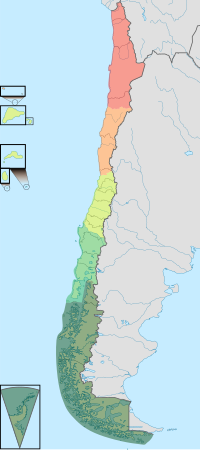Natural region

The Burren, a vast natural region in Ireland; view of the western scarp
A natural region is a basic geographic unit. Usually it is a region which is distinguished by its common natural features of geography, geology, and climate.
From the ecological point of view, the naturally occurring flora and fauna of the region are likely to be influenced by its geographical and geological factors, such as soil and water availability, in a significant manner. Thus most natural regions are homogeneous ecosystems. Human impact can be an important factor in the shaping and destiny of a particular natural region.[1]
There are 11 major regions in the world.
Contents
1 location of some natural regions of the world
2 See also
3 References
4 External links
location of some natural regions of the world
The concept "natural region" may refer to a small, well defined area, or to a large basic geographical unit, like the vast boreal forest region.[2] The term may also be used generically, like in alpine tundra, or specifically to refer to a particular place.
The term is particularly useful where there is no corresponding or coterminous official region. The Fens of eastern England, the Thai highlands, and the Pays de Bray in Normandy, are examples of this. Others might include regions with particular geological characteristics, like badlands, such as the Bardenas Reales, an upland massif of acidic rock, or The Burren, in Ireland.
See also
- Ecoregion
- Natural regions of Chile
- Natural regions of Colombia
- Natural regions of Germany
- Natural regions of Venezuela
- Physiographic regions of the world
References
^ UNESCO - Natural and Cultural Landscape of Danube Region
^ Natural Regions - The Canadian Encyclopedia
External links
- Natural regions of Texas
- Alberta's Natural Regions
- Natural regions in Valencia
